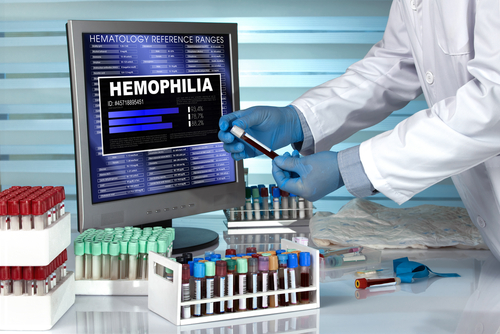Researchers Offer a Rundown on New Approaches to Treating Hemophilia

Hemophilia patients are taking heart from a number of innovative treatment approaches that have reached the clinical trials stage.
Researchers at the Children’s Hospital of Philadelphia offered a rundown on the advances in an article in the journal Blood titled “Novel approaches to hemophilia therapy: successes and challenges.”
They include extended half-life (EHL) replacement factors, antibodies that mimic blood-clotting factors, anti-thrombin inhibitors, and gene therapies. Anti-thrombin inhibitors prevent the formation of potential dangerous clots in blood vessels.
Despite positive initial findings on these therapies, scientists still don’t know much about their long-term safety and ability to reduce bleeding episodes. This is particularly true with inhibitors.
A major drawback of using synthetic hemophilia clotting factors to prevent or shorten bleeding episodes is their inability to stay in the body to continue working. Many have short half-lives — or the amount of time it takes a drug to lose half its strength in the blood. This means patients must receive injections of the factors several times a week.
Developing new EHL therapies has been a major focus of recent research, because they have the potential to improve preventive treatments while requiring fewer injections. They work by altering the structure of protein factor molecules so it takes longer to clear them from the blood.
EHL recombinant factor IX (FIX) therapies have increased between 2 1/2 and five times the length of time that the FIX clotting factor can stay in the blood. This has decreased the number of infusions a patient needs in a particular time frame.
Recombinant factor VIII (FVIII) EHL therapies have increased the FVIII factor’s half-life by 50 percent. This means patients can take two infusions a week instead of three.
“While EHL products are promising, the optimal strategy for treatment of bleeds between prophylactic [preventive] doses and dosing regimens will likely need to be individualized” to patients, “accounting for age and physical activity,” the researchers wrote.
Another preventive approach is using antibodies that mimic clotting factors. An advantage of this method is that the treatment can be administered less often — between weekly and monthly. A typical antibody is a protein the immune system uses to attack invaders.
One of the new antibody therapies is Roche’s Emicizumab (ACE910). It binds to factor Xa and factor X, mimicking FVIIIa activation in hemophilia A patients.
Clinical trial findings have demonstrated its ability to prevent bleeding episodes. Forty-seven percent of the patients that used it required recombinant factor VIIa as well, however.
Alnylam Pharmaceuticals’ Fitusiran (ALN-AT3SC) is another non-factor therapy known as an anti-thrombin inhibitor that targets naturally occurring anticoagulant proteins. Initial clinical trial data have shown that it helps prevent bleeding episodes.
Concizumab is an inhibitor that Novo Nordisk is developing to treat hemophilia A and B. It works by targeting a protein called tissue factor pathway inhibitor (TFPI). Researchers have reported promising Phase 1 clinical trial results.
Although non-factor-based strategies can counter bleeding, studies so far have indicated they are unable to prevent bleeding events.
Like EHL, gene therapy has been a major focus of recent treatment development efforts.
Gene therapies work by correcting the underlying genetic cause of hemophilia. They do this by delivering a normal gene to encode the clotting factor missing in the disease.
These therapies have shown the potential to transform severe forms of the disease into milder ones. A single administration of some gene therapies has raised clotting factor levels to where they need to be.
In some cases, this has led to patients not having to take preventive treatments.
The authors of the article said scientists need to do studies that confirm the long-term safety of effectiveness of genetic strategies, however.
Although the new treatment approaches are likely to benefit hemophilia patients in the developed world in the relatively short term, the same is unlikely to be true in the developing world.
More than 75% of the worldwide hemophilia population does not receive regular treatment, if treated at all.
“Closing this treatment gap between patients in the developed and the developing world remains an unmet ethical imperative,” the researchers wrote. “It would be remarkable if some of these technologies could be adapted to economically sensitive therapies to address this critical problem.”






